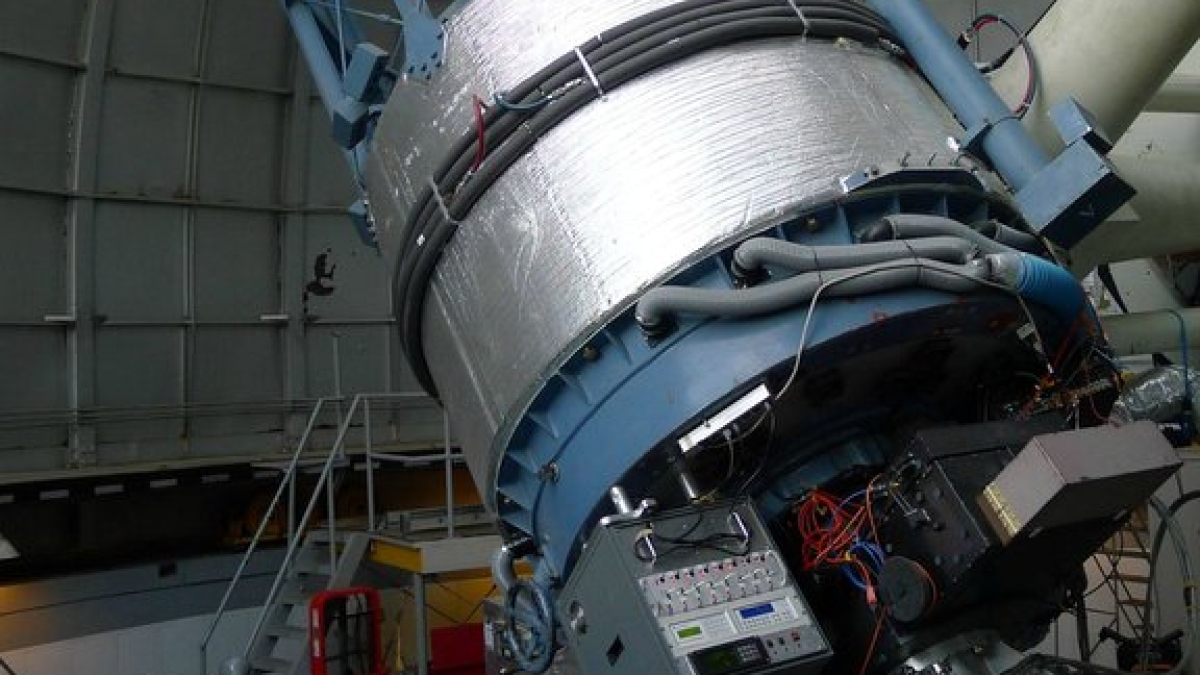Astrophysics student awarded prestigious NSF Fellowship

Arizona State University astrophysics graduate student Kimberly Ward-Duong is the recipient of a 2012 National Science Foundation Graduate Research Fellowship. The program recognizes and supports outstanding graduate students working in NSF-supported science, technology, engineering, and mathematics disciplines who are pursuing research-based master’s and doctoral degrees.
Ward-Duong, a first-year doctoral student in ASU’s School of Earth and Space Exploration, will receive a three-year annual stipend providing the full costs of salary, tuition and fees, and travel for international research and professional development programs.
Ward-Duong joined SESE after completing undergraduate degrees in physics, astronomy, and mathematics at Northern Arizona University. Her previous research involved observations of transiting exoplanets and the search for both planetary companions and moons in those systems. She was a NASA Space Grant intern for one year. The summer after her junior year, she was an intern at the Harvard-Smithsonian Center for Astrophysics in Cambridge, MA, as part of the NSF Research Experiences for Undergraduates program. During her internship, she worked on Chandra X-ray Observatory observations of elliptical galaxies.
Upon arriving at ASU last Fall, she began a research project with Associate Professor Sangeeta Malhotra designed to search for infrared signatures of dust grains within massive clusters of galaxies, using data from the NASA WISE (Wide-field Infrared Survey Explorer) satellite. Malhotra provided mentorship and advice as Ward-Duong worked on her NSF fellowship application. Currently, Ward-Duong is working on two projects, ranging from the nearest stars to distant galaxies. With her advisor, Associate Professor Jenny Patience, Ward-Duong is using state-of-the-art adaptive optics imaging to search for substellar companions to nearby low-mass stars to investigate how stars and planets form. Through an NSF educational grant led by Assistant Professor Evan Scannapieco, Ward-Duong is also pursuing a research project with the newly-constructed Low Frequency Array (LOFAR) to study magnetism on galactic and cosmic scales; she will travel to Europe this summer to work with scientists calibrating this new observatory.
“As a student and researcher, Kimberly stands out with her keen interest in forefront observing techniques and their astronomical applications. She is very talented mathematically and has a strong knowledge of observational astronomy across a range of wavelengths. She has the determination and the independence to be successful in her PhD research work, and I look forward to working with her over the next several years. I can see this award helping her to achieve her dream of becoming a research faculty member or staff scientist at an astronomy research institution,” says Patience.
“More than anything, this award will really allow me to focus and devote my time to research here at ASU,” says Ward-Duong. “It also gives me a great deal of freedom to choose which areas of astronomy I want to pursue, and it will open up future collaborations and research opportunities during my PhD program.”
As the oldest graduate fellowship of its kind, the fellowship has a long history of selecting recipients who achieve high levels of success in their future academic and professional careers. Since 1952, NSF has funded over 46,500 Graduate Research Fellowships out of more than 500,000 applicants. More than 30 of them have gone to become Nobel laureates, and more than 440 have become members of the National Academy of Sciences. Past fellows include numerous Nobel Prize winners, U.S. Secretary of Energy Steven Chu, Google founder Sergey Brin, and “Freakonomics” co-author Steven Levitt.